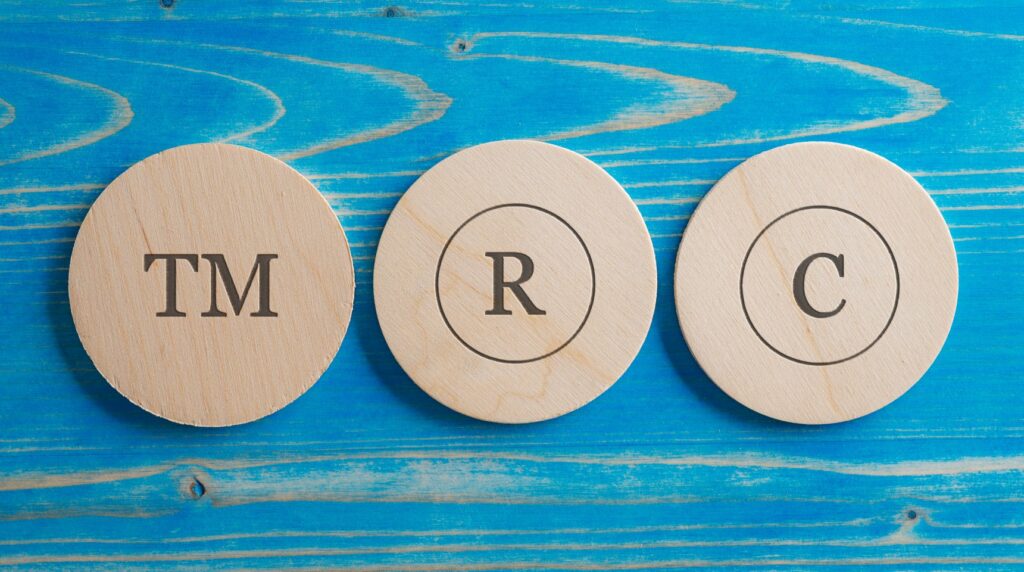Brand Protection in the Japanese Gaming Industry: Actions and Penalties Rights-Holders Can Pursue When Their Products Are Copied

目次
Key Words: intellectual property, trademark rights, the Unfair Competition Prevention Act, brand protection, character goods, VTuber, counterfeit goods, imitation goods
Summary
This article explores the legal aspects and response strategies for handling counterfeit merchandise in the gaming and VTuber industries. It discusses the application of the Trademark Act and the Unfair Competition Prevention Act, focusing on trademark infringement and the misuse of well-known or famous product indications. The article outlines the rights holders’ legal remedies, including injunctions, compensation claims, and criminal penalties, and emphasizes the importance of proactive measures for brand protection. This guidance aims to support maintaining market integrity and protecting the interests of legitimate businesses in these rapidly growing sectors.
1. Introduction
Original merchandise has long been a key part of marketing for popular games. Recently, with the rise of esports, there has been an increase in products related to games and their characters. This growth is also driven by the popularity of digital personalities like VTubers in Japan. In fact, Japan’s character business market is expected to reach 2,650.8 billion yen in fiscal year 2023, slightly above last year’s figures.[1]
With the growth in merchandise sales, there has also been a notable increase in business resales, particularly through e-commerce platforms that are easily accessible for businesses. Most products sold are legitimate, made and distributed by the game companies or their partners. However, in Japan, there have been instances of low-quality fakes or counterfeit items, which illegally use game or character names, logos, or symbols. These items are often made abroad, imported into Japan, and sold online.
As a matter of course, selling genuine merchandise by a business is generally allowed.[2] On the other hand, selling counterfeit items—those that copy or imitate trademarks without permission—can violate laws like the Trademark Act and the Unfair Competition Prevention Act, as they misuse the brand’s appeal to attract customers.
This article will discuss the legal issues around selling counterfeit products in Japan, including the actions and penalties rights holders can pursue when their products are copied.
2. Trademark Infringement
(1) Understanding Trademark Infringement
The Trademark Act protects trademarks. Article 2, Paragraph 1 of the Trademark Act defines a trademark as any character, figure, symbol, three-dimensional shape, or color, or combination thereof, sound, or other item specified by a Cabinet Order, which is recognizable by human perception, and is used (a) in connection with goods produced in the course of trade, or (b) in connection with services provided in the course of trade.
For a trademark to be protected, it is necessary to file an application for trademark registration. Trademark rights are established only after the trademark rights are registered.[3] Trademark rights last 10 years from the registration date but can be renewed.[4] Details on trademark registrations are available on the “J-Plat Pat” patent information platform: https://www.j-platpat.inpit.go.jp/
Trademark rights give exclusive usage of the registered trademark for specific goods or services.[5] Using a mark identical or similar to a registered trademark on related goods or services without the owner’s permission infringes these rights.
If a game or character’s name, logo, or mark is registered and used on counterfeit or imitation products for similar goods or services, it breaches trademark rights.
However, if a product’s logo or mark is not registered, then its sale does not constitute trademark infringement. In such cases, the focus shifts to unfair competition, which is discussed in the following section 3.
(2) Legal Actions in Case of Trademark Infringement
The trademark rights owner can take legal action against an infringer for violating their trademark. This includes seeking an injunction to stop the infringement[6] and demanding compensation for damages caused by the infringement.[7]
While an intentional or negligent act by the infringer is not required for an injunction, it is necessary for a claim for damages. However, there is a presumption of negligence on the part of the infringer in the act of infringement.[8]
In cases where counterfeit or imitation products of games or character goods are sold, the rights holder can demand an injunction. Specifically, the rights holders are entitled to (i) request the cessation of the sale of counterfeit goods, and (ii) demand the destruction of the existing stock of counterfeit goods. Additionally, they are also entitled to (iii) claim compensation for damages resulting from the sale of counterfeit or imitation goods.
(3) Criminal Penalties for Trademark Infringement
Criminal penalties can also be imposed for acts of trademark infringement.
First, a person who uses a trademark identical to a registered trademark on the same goods without permission, thereby infringing the exclusive right, can face imprisonment of up to 10 years or a fine of up to 10 million yen.[9]
Next, unauthorized use of a trademark similar to another’s registered trademark on the same goods, or the use of a trademark identical or similar to another’s registered trademark on similar goods—constituting an infringement of the prohibited right or an indirect infringement—is punishable by imprisonment of up to five years or a fine of up to 5 million yen.[10]
3. Violation of the Unfair Competition Prevention Act
(1) What Constitutes Unfair Competition under Japanese Law?
The Unfair Competition Prevention Act defines “unfair competition” as actions that hinder fair business competition.[11] It provides for the right to demand an injunction, compensation for damages, and criminal penalties for infringements on business profits. Key categories of unfair competition include:
- (a) Inducing Confusion by Using Well-known Indication (No. 1)
- (b) Use of Famous Indication of Others (No. 2)
- (c) Imitation of goods’ appearance (No. 3)
- (d) Misappropriation of trade secrets (Nos. 4-10)
- (e) Deception concerning limited provision data (Nos. 11-16)
- (f) Misrepresentation regarding technical restrictive measures (No. 17 and No. 18)
- (g) Domain name fraud (No. 19)
- (h) Misrepresentation of quality (No. 20)
- (i) Defamation (No. 21)
- (j) Unauthorized use of trademarks by agents (No. 22)
When counterfeit or imitation products of games, characters, or other items are sold, the relevant aspects of “unfair competition” include (1) Inducing Confusion by Using Well-known Indication, and (2) Use of Famous Indication of Others. Each type of unfair competition is further explained below.
(2) Inducing Confusion by Using Well-known Indication
Article 2, Paragraph 1, Item 1 of the Unfair Competition Prevention Act defines “Inducing Confusion by Using Well-known Indication” as follows:
“the act of creating confusion with another person’s goods or business, by using an indication of goods or business (meaning a name, trade “the act of creating confusion with another person’s goods or business, by using an indication of goods or business (meaning a name, trade mark, marks, containers or packaging for goods belonging to a person’s business, or any other indication of a person’s goods or business; the (meaning a name trade name, trademark, marks, containers or packaging for goods belonging to a person’s business, or any other indication of a person’s goods or business; the same applies hereinafter) that is identical or similar to another person’s indication of goods or business that is well-known among consumers as belonging to that person, or by transferring, delivering, displaying for the purpose of transfer or delivery, exporting, importing or providing through telecommunications lines goods that use such indication.”
For an act to qualify as this type of unfair competition, the following conditions must be met:
(1) The indication is well-known among consumers; and
(2) The act incites confusion with another person’s goods or business.
The term “well-known” means that the product must be widely recognized among consumers, and it is not necessary that the product be known nationwide.
The following are examples of product indications that have been found to be “well-known” in court cases:
Examples of “Well-known” Product Indications: VOGUE, bow embroidery on Levi’s jeans, Levi’s red tab, 501, Fire Emblem (video game), Dojima Roll, Micro Diet, Shibuya Girls Collection
Furthermore, a trade or other representation is defined as a name, trade name, trademark, emblem, container or packaging of goods, or any other representation relating to the business of a person.
Thus, if a logo or mark, well-known as being associated with a specific product, is used without permission on counterfeit products, leading consumers to mistake these for genuine products, it is an act of unfair competition. Such unauthorized use of logos or marks, resulting in consumer confusion, is illegal.
(3) Use of Famous Indication of Others
Article 2, Paragraph 1, Item 2 of the Act defines “Use of Famous Indication of Others” as:.
“the act of using an indication of goods or business that is identical or similar to another person’s famous indication of goods or business as one’s own, or of transferring, delivering, displaying for the purpose of transfer or delivery, exporting, importing, or providing through telecommunications lines goods that use such indication”. telecommunications lines goods that use such indication”.
Contrary to Inducing Confusion by Using Well-known Indication, there is no need to create confusion with another person’s goods or business under Use of Famous Indication of Others.
However, the indication must be “famous” under this category, which means that there must be a higher level of notability than merely being “well-known” under Inducing Confusion by Using Well-known Indication. Comparing the examples of “well-known” indications mentioned earlier in (2) with the following “famous” examples will illustrate the difference in the level of notability.
Examples of “Famous” Product Indications: Brands that have been recognized as “famous” in court cases include “Chanel”, “Louis Vuitton”, “JAL”, “Peter Rabbit”, and “Budweiser”.
Selling counterfeit products that unauthorizedly use a logo or mark identical or similar to a famous marking of another entity is considered an act of unfair competition. This is illegal, irrespective of whether it leads to confusion between the genuine product and the counterfeit product.
(4) Legal Measures for Rights Holders Against Unfair Competition Acts
A business whose interests are harmed by unfair competition can seek an injunction against the infringer, as per Article 3 of the Unfair Competition Prevention Act. Additionally, if a business’s profits are damaged by unfair competition, whether intentional or due to negligence, the affected party can file a claim for damages against the infringer, as stated in Article 4 of the Act.
Similar to trademark infringement cases, when counterfeit goods of games, characters, etc., are sold, rights holders are entitled to (1) request the cessation of the sale, (2) demand the destruction of counterfeit stock, and (3) file a claim for compensation for damages resulting from the sale of counterfeit goods.
(5) Criminal Penalties for Unfair Competition
For acts of Inducing Confusion by Using Well-known Indication, criminal penalties are applied for actions committed with an “unfair purpose” as per Article 21、Paragraph 2, Item 1 of the Unfair Competition Prevention Act. The term “unfair purpose” includes intentions like obtaining an unfair advantage, causing harm to others, or any other unjust motives, as stated in Article 19, Paragraph 1, Item 2of the Act.
Regarding the Use of Famous Indication of Others, criminal penalties are imposed for acts aimed at unjustly profiting from the reputation or fame of a famous indication of goods or damaging such reputation or fame, as outlined in Article 21, Paragraph 2, Item 2 of the Act.
4. Summary of Actions for Rights Holders to Address Counterfeit and Imitation Products
When there is suspicion of counterfeit or imitation product sales, the first step is to verify the authenticity of the merchandise in question. If the product is confirmed to be counterfeit or infringing, a written notice (oftentimes sent via content-certified mail) should be dispatched to the seller. This notice should demand the cessation of sales and the disposal of the counterfeit or infringing inventory. If the seller fails to comply, legal action should be pursued, including filing for a provisional disposition or a lawsuit. Additionally, for sales on e-commerce platforms, requesting the site provider to remove the product listing page is also advisable.
With the rising popularity of games, characters, and VTubers, the manufacturing and selling of counterfeit or imitation products can increase, often appearing on the market. This situation can lead to consumers or fans being unable to confidently purchase genuine products, resulting in reduced profits for rights holders like game companies and VTuber management agencies. For rights holders, proactive measures such as continuous monitoring of counterfeit or imitation product sales and immediately demanding infringers to cease sales or pay damages can be beneficial. This approach for brand protection safeguards the right-holders’ long-term interests.
[1] Yano Research Institute Ltd.’s press release dated August 1, 2023
https://www.yano.co.jp/press-release/show/press_id/3292
[2] In the case of sales of used goods, the seller should be vigilant on regulations under the Secondhand Goods Business Act.
[3] Article 18, Paragraphs 1 and 2 of the Trademark Act
[4] Article 19 of the Trademark Act
[5] Article 25 of the Trademark Act
[6] Article 36 of the Trademark Act
[7] Civil Code Article 709. Article 38 of the Trademark Act as presumption of damages
[8] Article 39 of the Trademark Act, Article 103 of the Patent Act.
[9] Article 78 of the Trademark Act
[10] Article 78-2 of the Trademark Act
[11] Article 2, Paragraph 1 of the Unfair Competition Prevention Act
Further contact

Shinichiro (“Shin”) Mori
MANAGING PARTNER
T: +813-6831-9282
E: shinichiro.mori@mps-legal.com

Kentaro Sano
SENIOR ASSOCIATE
T: +813-6831-9283
E: kentaro.sano@mps-legal.com

